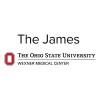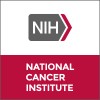
CD19 Chimeric Receptor Expressing T Lymphocytes In B-Cell Non Hodgkin's Lymphoma, ALL & CLL
B Cell LymphomaChronic Lymphocytic Leukemia1 morePatients on this study have a type of lymph gland cancer called non-Hodgkin Lymphoma, Acute Lymphocytic Leukemia, or chronic Lymphocytic Leukemia (these diseases will be referred to as "Lymphoma" or "Leukemia"). Their Lymphoma or Leukemia has come back or has not gone away after treatment (including the best treatment known for these cancers). This research study is a gene transfer study using special immune cells. The body has different ways of fighting infection and disease. No one way seems perfect for fighting cancers. This research study combines two different ways of fighting disease, antibodies and T cells, hoping that they will work together. Antibodies are types of proteins that protect the body from bacterial and other diseases. T cells, also called T lymphocytes, are special infection-fighting blood cells that can kill other cells including tumor cells. Both antibodies and T cells have been used to treat patients with cancers; they have shown promise, but have not been strong enough to cure most patients. T lymphocytes can kill tumor cells but there normally are not enough of them to kill all the tumor cells. Some researchers have taken T cells from a person's blood, grown more of them in the laboratory and then given them back to the person. The antibody used in this study is called anti-CD19. It first came from mice that have developed immunity to human lymphoma. This antibody sticks to cancer cells because of a substance on the outside of these cells called CD19. CD19 antibodies have been used to treat people with lymphoma and Leukemia. For this study anti-CD19 has been changed so that instead of floating free in the blood it is now joined to the T cells. When an antibody is joined to a T cell in this way it is called a chimeric receptor. In the laboratory, investigators have also found that T cells work better if they also put a protein that stimulates T cells called CD28. Investigators hope that adding the CD28 might also make the cells last for a longer time in the body. These CD19 chimeric receptor T cells with C28 T cells are investigational products not approved by the Food and Drug Administration. The purpose of this study is to find the biggest dose of chimeric T cells that is safe, to see how the T cell with this sort of chimeric receptor lasts, to learn what the side effects are and to see whether this therapy might help people with lymphoma or leukemia.

AlloHCT From Matched Unrelated Donors in Pts w/ Advanced Hematologic Malignancies & Disorders
LeukemiaLymphoma1 moreRATIONALE: Giving chemotherapy with or without total-body irradiation before a donor umbilical cord blood transplant helps stop the growth of cancer or abnormal cells. It also helps stop the patient's immune system from rejecting the donor's stem cells. When the stem cells from a donor are infused into the patient they may help the patient's bone marrow make stem cells, red blood cells, white blood cells, and platelets. Sometimes the transplanted cells from a donor can make an immune response against the body's normal cells. Giving cyclosporine and mycophenolate mofetil before and after transplant may stop this from happening. PURPOSE: This clinical trial is studying how well four different chemotherapy regimens given with or without total-body irradiation before umbilical cord blood transplant work in treating patients with relapsed or refractory hematologic cancer.

Combination Chemotherapy and Dasatinib in Treating Participants With Philadelphia Positive or BCR-ABL...
Acute Lymphoblastic LeukemiaBCR-ABL1 Fusion Protein Expression5 moreThis phase II trial studies how well combination chemotherapy and dasatinib works in treating participants with Philadelphia-positive or B-cell receptor-ABL positive acute lymphoblastic leukemia. Drugs used in chemotherapy, such as cyclophosphamide, vincristine, doxorubicin, dexamethasone, methotrexate, and cytarabine, work in different ways to stop the growth of tumor cells, either by killing the cells, by stopping them from dividing, or by stopping them from spreading. Dasatinib may stop the growth of tumor cells by blocking some of the enzymes needed for cell growth. Giving chemotherapy in combination with dasatinib may work better in treating participants with Philadelphia-positive or BCR-ABL positive acute lymphoblastic leukemia.

Magrolimab, Azacitidine, and Venetoclax for the Treatment of Acute Myeloid Leukemia
Acute Myeloid LeukemiaRecurrent Acute Myeloid Leukemia1 moreThis phase Ib/II trial studies the side effects and best dose of magrolimab and venetoclax when given together with azacitidine and to see how well they work in treating patients with acute myeloid leukemia. Magrolimab is a monoclonal antibody that may interfere with the ability of cancer cells to grow and spread. Chemotherapy drugs, such as azacitidine, work in different ways to stop the growth of cancer cells, either by killing the cells, by stopping them from dividing, or by stopping them from spreading. Venetoclax may stop the growth of cancer cells by blocking Bcl-2, a protein needed for cancer cell survival. Giving magrolimab, azacitidine, and venetoclax may help to control the disease.

Venetoclax and Ibrutinib in Treating in Participants With Chronic Lymphocytic Leukemia and Ibrutinib...
Chronic Lymphocytic LeukemiaIbrutinib ResistanceThis phase II trial studies how well venetoclax and ibrutinib work in treating participants with chronic lymphocytic leukemia and have developed genetic mutations after previously being treated with ibrutinib. Venetoclax and ibrutinib may stop the growth of cancer cells by blocking some of the enzymes needed for cell growth.

Atovaquone (Mepron®) Combined With Conventional Chemotherapy for de Novo Acute Myeloid Leukemia...
Acute Myeloid LeukemiaThis study will test daily dosing of atovaquone at established pneumocystis jiroveci pneumonia (PJP) prophylaxis dosing in combination with standard induction chemotherapy for de novo AML. The primary objectives are to determine the frequency of omission of atovaquone doses due to standard induction chemotherapy toxicity, to quantify the steady-state plasma levels of atovaquone, and to determine the time to achievement of steady state atovaquone levels in this population.

ET019003-T Cells in Relapsed/Refractory CD19+ B-Cell Leukemia and Lymphoma
LeukemiaLymphomaThis is a single center, open-label, 3+3 dose escalation, phase 1 study to evaluate the efficacy and safety of ET019003-T cells therapy for patients with relapsed/refractory CD19+ acute lymphoblastic leukemia and lymphoma.

Clinical Transplant-Related Long-term Outcomes of Alternative Donor Allogeneic Transplantation (BMT...
Acute Myeloid LeukemiaAcute Lymphoblastic Leukemia5 moreThe purpose of this study is to determine if a search strategy of searching for an HLA-matched unrelated donor for allogeneic transplantation if possible then an alternative donor if an HLA-matched unrelated donor is not available versus proceeding directly to an alternative donor transplant will result in better survival for allogeneic transplant recipients within 2 years after study enrollment.

Using the Anticancer Drug Olaparib to Treat Relapsed/Refractory Acute Myeloid Leukemia or Myelodysplastic...
Acute Myeloid LeukemiaAcute Myeloid Leukemia Arising From Previous Myelodysplastic Syndrome5 moreThis phase II trial studies how well olaparib works in treating patients with acute myeloid leukemia that has come back (relapsed) or does not respond to treatment (refractory), or myelodysplastic syndrome. Patients must also have a change in the gene called the IDH gene (IDH mutation). Olaparib may stop the growth of cancer cells by blocking some of the enzymes needed for cell growth. This study is being done to see if olaparib is better or worse in treating acute myeloid leukemia or myelodysplastic syndrome compared to the standard chemotherapy drugs.

Phase I Study of Inotuzumab With Augmented BFM Re-Induction for Patients With Relapsed/Refractory...
B-cell Acute Lymphoblastic LeukemiaIn the proposed study, escalating doses of inotuzumab ozogamicin will be added to a standard pediatric inspired re-induction regimen and administered to patients with relapsed or refractory B-cell acute lymphoblastic leukemia (B-ALL). Two re-induction regimens will be tested (one without pegaspargase and one including pegaspargase) and participants will be followed for disease status, allogeneic hematopoietic cell transplant (allo HCT), veno-occlusive disease following allo HCT, and overall survival.
